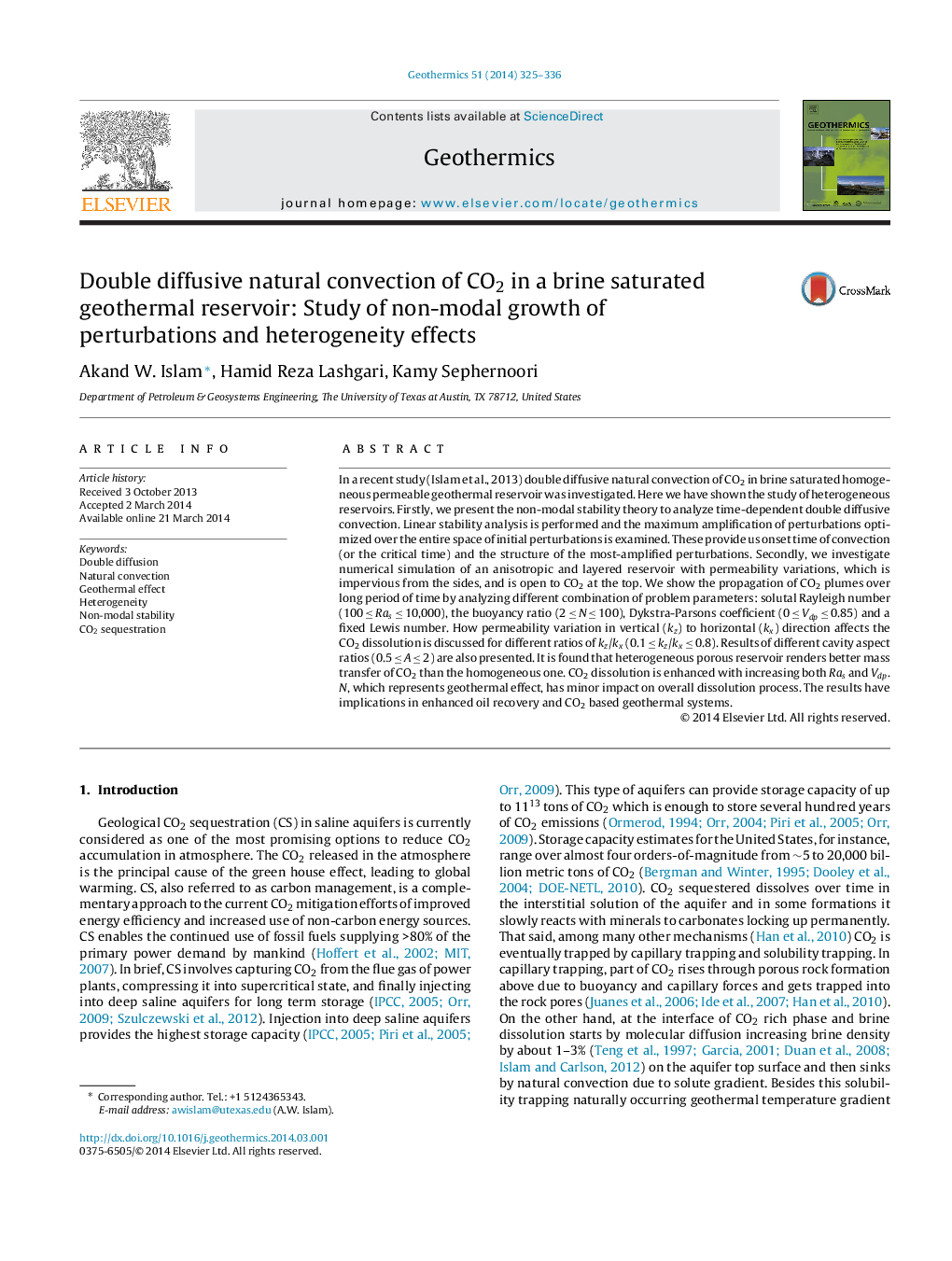| Article ID | Journal | Published Year | Pages | File Type |
|---|---|---|---|---|
| 1742394 | Geothermics | 2014 | 12 Pages |
•Double diffusive natural convection of carbon dioxide in brine saturated geothermal reservoir is numerically investigated.•Non-modal growth of perturbations and heterogeneity effects are studied.•The objective is to understand the dissolution of carbon dioxide through natural convection process.•Geothermal effects and effects of reservoir aspect ratio are analyzed.
In a recent study (Islam et al., 2013) double diffusive natural convection of CO2 in brine saturated homogeneous permeable geothermal reservoir was investigated. Here we have shown the study of heterogeneous reservoirs. Firstly, we present the non-modal stability theory to analyze time-dependent double diffusive convection. Linear stability analysis is performed and the maximum amplification of perturbations optimized over the entire space of initial perturbations is examined. These provide us onset time of convection (or the critical time) and the structure of the most-amplified perturbations. Secondly, we investigate numerical simulation of an anisotropic and layered reservoir with permeability variations, which is impervious from the sides, and is open to CO2 at the top. We show the propagation of CO2 plumes over long period of time by analyzing different combination of problem parameters: solutal Rayleigh number (100 ≤ Ras ≤ 10,000), the buoyancy ratio (2 ≤ N ≤ 100), Dykstra-Parsons coefficient (0 ≤ Vdp ≤ 0.85) and a fixed Lewis number. How permeability variation in vertical (kz) to horizontal (kx) direction affects the CO2 dissolution is discussed for different ratios of kz/kx (0.1 ≤ kz/kx ≤ 0.8). Results of different cavity aspect ratios (0.5 ≤ A ≤ 2) are also presented. It is found that heterogeneous porous reservoir renders better mass transfer of CO2 than the homogeneous one. CO2 dissolution is enhanced with increasing both Ras and Vdp. N, which represents geothermal effect, has minor impact on overall dissolution process. The results have implications in enhanced oil recovery and CO2 based geothermal systems.
